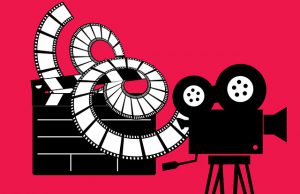
Multimedia in Education
Multimedia has been used to create a greater understanding of a topic or class by allowing the audience to engage in creating, reviewing and viewing multimedia presentations. It can be utilized as a teaching tool, as a manual or even a source of information about a particular topic. Multimedia presentations include pictures, animations, videos, 3D artwork and visual examples and presentations in almost any format you can think of. You will find a terrific deal of multimedia products available now which you could utilize to teach or educate your employees. Including multimedia based training guides, e-books, CDs and DVDs, flash cards, interactive quizzes and tests and much more. Below we will look at some of the benefits of using multimedia to your workers.
Multimedia in Education
There’s been a growth in multimedia and technological business jobs over the past few years with the huge demand for software engineers, product designers, music and video specialists and engineers/technicians who can create new multimedia applications. Some of the jobs available involve working in television, film, the web and mobile technology development. In addition to being involved in technical occupations, many multimedia professionals operate in creative businesses finishing research and visual development projects, such as on education and advertising issues, advertising, multimedia conferences, art displays and much more.
The benefits of multimedia presentations for the workforce also extends into the wider business community. This is only because it provides them with a huge variety of new media tools to advertise their businesses. One benefit of multimedia presentations is that it enables you to present data and facts in an entirely new light. It allows you to explore new places and bring in a fresh perspective to older ones. Many multimedia courses provide courses in communication strategies and one particularly popular class involves learning the significance and application of the web for marketing research purposes. You will learn what approaches you can use to get your business noticed on the internet and learn the importance of social networking in advertising your business.
In addition to the advantages that multimedia presents to the general public, it is also a great way to introduce and train new employees. Many multimedia courses incorporate a variety of learning opportunities for both teachers and pupils. It permits pupils to use multimedia in the office and in different scenarios in order that they can build up skills and knowledge from interactive multimedia. It can provide a valuable and interesting learning environment and in turn makes the workplace a more interesting place to be in. As well as this, multimedia training can provide you with a greater understanding of what is required in your role, which may make your job much ea
Education
For some folks, multimedia technology is already part of their everyday life. For example, if you’re already familiar with using video and audio features in your computer, you might think about using digital signage in your office or your property. Digital signage can be incorporated into your existing network, so you will have the ability to supply your clients with up to date info regarding your company, new products and other details. Using multimedia on your multimedia technology makes it possible to to present the information in a completely new way, which means you’re also creating an entirely different type of consciousness about your company. This is one of the key advantages of digital signage, particularly in language instruction.

It has long been recognised that multimedia demonstrations involve using sound, images and text in a particular order and this arrangement of presentation is contingent upon the medium in question. In the past, multimedia demonstrations involved the supply of analog content via channels like radio, TV and films. With the growth of newer media forms like the world wide web, movies and computer games, multimedia presentations have obtained another technological giant and merged it into a single thing – the internet. Multimedia presentations in the web may comprise video, pictures, animation and interactivity. Video can be animated, alter position and change the location of embedded items, whereas pictures enable you to insert text and interactivity in substantially the same way as a film does. Because of this, the net can be considered to be multimedia in its most fundamental form.
Multimedia in Education
It had been the multimedia presentations in scientific study which popularised the use multimedia at work. Multimedia presentations have the capability to draw participants to one point of perspective, as is true with non-linear systems like internet meetings. In web meetings, a group of people are able to exchange ideas, information or simply converse without the usage of words or speech. Web meetings make the usage of multimedia nearly compulsory. But, web meetings are not the sole medium on which nonlinear approaches can be utilized. Even nonlinear approaches, such as sound presentations, still have a place in scientific study.
The use of multimedia in education is increasing at an exponential pace. Over the previous decade, more multimedia content and multimedia means of shipping had become available, and they’re used in both the public and private sectors. The most typical multimedia presentations include live movies, interactive multimedia sessions, slide shows, documentaries and short video clips (of several minutes or hours). There are multiple applications for multimedia in education, with unique degrees of sophistication, usually depending on the intended audience. It’s no surprise that there has been such a proliferation of different online multimedia courses, because it is practically impossible to imagine any subject, no matter how complicated, that cannot be covered in some way by the use of multimedia.
